

| Spring 2008 | |||||||||
| Current Issue | |||||||||
| A Family Affair A Global Solution for Diabetes Ecology and Public Health Building Public Health Capacity in India 'Big Picture' Thinking A Community of Scholars From the Dean In Brief Alumni News |
|||||||||
| Past Issues Other Publications Contact Us Make a Gift RSPH home |
|||||||||
|
|||||||||
Directed by DuBois Bowman, the Center for Biomedical Imaging Statistics (CBIS) helps Emory researchers improve disease prevention, diagnosis, treatment, and public health. CBIS drives research and patient care by developing specialized statistical techniques tailored for the data collected through biomedical imaging studies of the body. It includes two other core faculty members—John Carew and Ying Guo—several affiliate members, and doctoral students in biostatistics.
When Bowman joined the Department of Biostatistics in 2000, he was the lone statistician dedicated to the nascent field of biomedical imaging.
"Once I began to work in this field, I quickly realized that the demand at Emory exceeded my capacity," he says.
Initially, Bowman worked with medical researchers on imaging studies of the brain. His collaborations grew to include cardiac imaging, liver imaging, and cancer applications, breast and prostate imaging in particular. Breast imaging has come to be a special area of interest, given the American Cancer Society recommendation that women at high risk for breast cancer be screened with magnetic resonance imaging (MRI) in addition to mammography. Bowman is working with experts at the Emory Winship Cancer Institute and the Georgia Institute of Technology to develop a screening method for breast cancer based on the data captured during functional MRI.
"What we are trying to do is develop statistical algorithms that can help us identify characteristics of a medical image that may be indicative of breast cancer and to localize specific areas of concern," says Bowman. "Biopsy is still the gold standard, but our methods will help better identify women who are likely candidates for breast cancer."
Bowman, Guo, and Emory psychiatrist Clinton Kilts hope to develop a predictive algorithm for schizophrenia by creating a model to predict changes in brain pattern activity in patients following treatment. "We are developing a model to pinpoint areas of concern in the brain, identified by using baseline functional scans along with any relevant patient history to predict how someone is likely to respond to treatment," Bowman explains. "Eventually, we might be able to extend this method to other psychiatric disorders such as depression."
CBIS is using a similar but expanded methodology to study cardiac perfusion and function in heart patients and those with liver disease. Researchers are comparing data captured a week and a year after heart attack to see which areas of the heart have improved. Also, researchers are investigating new methods to detect liver diseases based on perfusion properties of tracer-enhanced MRI.
In Bowman's view, the lines between medicine and public health overlap in CBIS. "We're working on problems that are major public health concerns such as mental illness, Alzheimer's disease, heart disease, and cancer. The bottom line is that we're trying to mitigate the burden of those illnesses through our research."
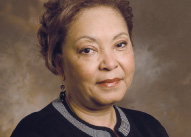
| ny | tiny font | ny |
| Joyce Essien |
Joyce Essien is one of three physicians in the nation to receive the 2008 Pride in the Profession Award, presented by the American Medical Association Foundation. The foundation honored Essien for her longtime efforts to help underserved patients with asthma and diabetes.
Essien tackles health issues on a number of fronts as director of the Center for Public Health Practice at the RSPH and an officer with the U.S. Public Health Service. She also leads a team in collaboration with the Vermont-based Sustainability Institute to support policy formation and interventions for diabetes.
Through the Center for Public Health Practice, Essien works with government public health offices to help them become flagships for reform within the national health care debate. The center helps improve the design of health offices and encourages joint research involving universities and public health organizations.
Essien also co-founded zap Asthma, a consortium that trains community health workers who help the families of inner-city children with asthma manage the disease. Most recently, Essien established a nonprofit foundation for the Carver Early College School, the first small-school concept implemented by the Atlanta Public Schools.
The Fall 2007 issue of Public Health included a story on the Global Elimination of Maternal Mortality from Abortion (GEMMA) Fund. Established by global health Professor Roger Rochat and his wife Susan, the fund supports publication of student research to eliminate maternal deaths from abortion. Here is Dr. Rochat's response to the article.
The article "A Legacy Beyond Controversy" had the subscript: "Roger and Susan Rochat reach out to students studying the lives of women broken apart by abortion." The intent of the GEMMA Fund is to prevent maternal deaths from unsafe abortion, but the subscript may have misled readers to think that all women having abortion have their lives broken apart.
Recent studies report that 42 million abortions were induced in 2003. About 48% of all abortions worldwide were unsafe, and more than 97% of all unsafe abortions were in developing countries. According to an article in The Lancet 2007, safe abortions are defined as "those that are performed in countries where abortion law is not restrictive, and (b) that meet legal requirements in countries where the law is restrictive." Most abortions are safe in countries where the procedure is legally permitted under a broad range of criteria. Pregnancies terminated early have an associated maternal mortality rate of 1 per million procedures.
WHO defines unsafe abortions as those "done either by people lacking the necessary skills or in an environment that does not conform to minimum medical standards, or both." Where abortions are highly restricted by law, abortions are frequently done by unqualified providers, are self-induced, or are done under unhygienic conditions. The maternal mortality rate from unsafe procedures may be as high as 3 per 100 procedures.
Unsafe abortion can still cause maternal death in the United States. In the early 1990s, a college student in the Southeast became pregnant despite using contraception. She made an appointment for an abortion at a health care facility. When she went for her appointment, she was deterred by protesters, went home, and used a coat hanger to induce abortion. She developed an overwhelming infection, was hospitalized and had a hysterectomy, but died.
A better subscript to the Public Health article would have been, "Roger and Susan Rochat reach out to students studying the lives of women broken apart by unsafe abortion."
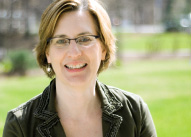
| ny | tiny font | ny |
| Pamela Mink |
Epidemiologist Pamela Mink is one of seven Emory faculty members named as 2008 Distinguished Cancer Clinicians and Scientists by the Georgia Cancer Coalition (GCC). She joins a growing cadre of GCC researchers committed to reducing cancer-related deaths statewide.
Mink is also among the newest faculty members at the RSPH. She formerly was a senior managing scientist with Exponent Inc. in Washington, D.C. Much of her research focuses on factors that may increase or decrease risk of cancer, including obesity and body fat distribution, diet and nutrition, exercise, family history of cancer, menopausal hormone therapy, as well as the mechanisms that may underlie these assocations. In particular, she has studied hormonally related cancers in women and men.
Thus far, the GCC has named 47 Distinguished Scholars at Emory, including nine from the RSPH. In addition to Mink, they include Jack Mandel, Roberd Bostick, and Paul Terry in epidemiology; Karen Glanz and Jo Ellen Stryker in behavioral sciences and health education; Joseph Lipscomb in health policy and management; Andre Rogatko in biostatistics; and Kyle Steenland in environmental and occupational health. All are helping position Emory and the state as national leaders in cancer research.
A landmark study is taking aim at the environment to find out what part it plays in children's health.
Emory is one of 22 new centers that will examine the effects of environmental and genetic factors on human health. The National Children's study—the largest such study ever conducted—will follow 100,000 children from pregnancy to their 21st birthday. Emory was awarded $25.5 million for its part in the study, a response to the 2000 Children's Health Act.
The RSPH and the School of Medicine, along with Morehouse School of Medicine and Battelle Memorial Institute, will manage recruitment of 2,000 women and data collection. Emory will enroll participants equally from DeKalb and Fayette counties because of their diverse populations.
"The study arose out of concern that environmental factors are affecting children's health and that when we look at the causes of childhood illnesses, they go back to pregnancy and even before," says RSPH epidemiologist Carol Hogue, one of the study's Emory site leaders.
Hogue and her collaborators say the study will help shape policies and interventions in the areas of sudden infant death syndrome, autism, asthma, obesity, heart disease, and schizophrenia.
"If we can prevent disease before a baby is conceived or in the womb, we've done a huge public health service," Hogue says.
She is in charge of recruiting 1,000 women and collecting data in DeKalb County, aided by RSPH colleagues Barry Ryan, Carey Drews-Botsch, and Lance Waller. They have five years to enroll women. During that time, the remaining 105 U.S. study locations are expected to open, making the full study extend well into the future.
"That's one reason we are so excited about this research," Hogue says. "It's an opportunity for students and junior faculty to work with a population for decades."
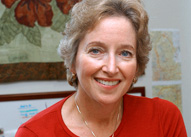
| ny | tiny font | ny |
| Karen Glanz |
Three faculty members in the RSPH received honors in conjunction with professional meetings last fall.
Among them is Karen Glanz, who received the 2007 Elizabeth Fries Health Education Award during the Society for Public Health annual meeting. Presented by the James F. and Sarah T. Fries Foundation, the award recognizes a health educator for advancing the field of health education or health promotion.
As director of the Emory Prevention Research Center (EPRC), Glanz has built successful partnerships to reduce the burden of cancer across the country, and more recently in rural Southwest Georgia. To motivate people to improve their health, she has developed and tested ways to encourage adults to eat properly, get teens to avoid taking up smoking, teach children to protect themselves from the sun, and urge adults to be screened for colon cancer.
Glanz also believes in paying it forward, donating a portion of her $25,000 award prize to support the Dean's Council Scholarship Fund for RSPH students. "It seemed natural to follow the example set by the Fries Foundation as supporters of public health and health education by giving something back to the RSPH," she says. "The school has provided a wonderful home for my research, teaching, and health programs over the past four years."
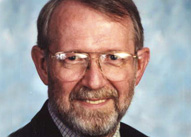
| ny | tiny font | ny |
| Alan Hinman |
All in the family
Two other RSPH faculty members received honors during the American Public Health Association (APHA) annual meeting. Alan Hinman, adjunct professor of epidemiology and global health, received the 2007 APHA Executive Director's Citation for longest service as speaker of the association's Governing Council. Hinman served as speaker from 1995 until he stepped down last fall.
Serving with APHA has been a family affair for Hinman. His father and father-in-law were career public health workers and long-time APHA members. Both Hinman and his brother Ed served as assistant surgeon generals with the U.S. Public Health Service. Hinman's daughter, Johanna, 98MPH, and her partner, Lisa Carlson, 93MPH, now serve on the Governing Council. Johanna also serves as senior project director with the eprc.
"I have had the rare privilege of sharing hotel rooms at APHA meetings with my father, my brother, and my daughter," says Hinman, a senior public health scientist with the Task Force for Child Survival and Development. "The APHA has very much been part of our family, and we have been part of the APHA family."
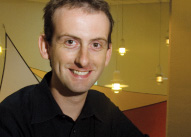
| ny | tiny font | ny |
| Rob Stephenson |
Similarly, teaching has been a labor of love for global health assistant professor Rob Stephenson. He was honored at APHA as the first recipient of the Early Career in Public Health Teaching Award, presented by the Association of Schools of Public Health and Pfizer Inc.
Stephenson, who taught and developed courses at Johns Hopkins and for health professionals in several countries, stopped teaching for a time, only to discover how much he missed it. Joining the RSPH in 2004 filled the void. "The more I work with students," he says, "the more my eyes are opened to looking at things in new ways."
Back to Top | RSPH home
© 2008. Emory University, All rights reserved.